Why Coney Island?
Everyone knows the name Coney Island. It’s one of those places, like Hollywood or Gettysburg, that you probably can’t remember hearing about for the first time. It’s just part of American culture, known as the birthplace of the amusement park, the roller coaster. But that’s where most people’s knowledge pretty much ends.
I grew up in Southern California but I’ve been living in New York for five years now. I visited Coney Island once, more than a decade ago, to get pummeled by the Cyclone on a grey, briny morning. But in the years since I moved here it never really occurred to me to visit again. When I realized this, I tried to figure out why. I love roller coasters and amusement parks, so you’d think I would take advantage of visiting the only park I can get to without renting a car. Clearly, something was holding me back.
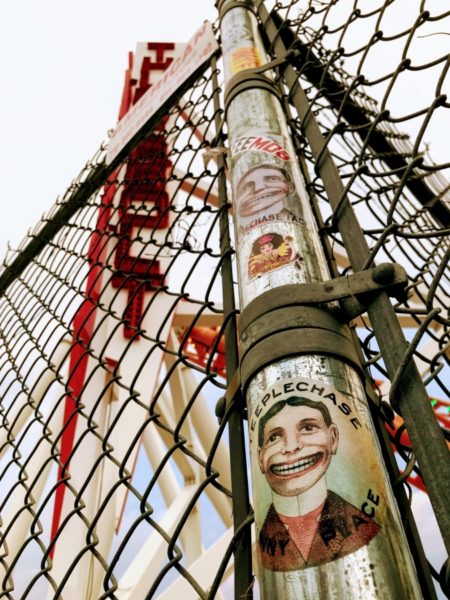
The “Steeplechase Face” still pops up all over Coney Island. Here, on a fencepost in front of the new Zamperla Thunderbolt.
Part of it, I realized, was my vaguely unpleasant associations with the idea of Coney Island: human freak shows, creepy clown faces, the electrocution of an elephant.
And another part of it, I realized, was a reaction to my last visit. I’d felt disappointed, maybe even a little dismayed then. This is the famous Coney Island? I thought to myself. The Cyclone’s surroundings had all the charm of a municipal impound lot. Everything was asphalt, weeping metal, and crumbling cement.
But I wanted to give Coney Island a second chance, and this time, I thought, I would do my best to understand its history first, before jumping to conclusions about its present.
So that’s what I’m sharing here—my own journey into Coney Island’s past in hopes of better appreciating its present. Spoiler alert: I like it more now than I did before. But I also wouldn’t call it easy to love. If you’ve read about the Coney Island’s “Golden Age,” or even if you’ve just spent a lifetime hearing Coney Island reflexively cited as the original American amusement park, a visit to Coney Island today can be downright disturbing. It’s hard not to look around and think that, given what it was then and what it is now, something terrible must have happened here. But frankly, this dystopian reality is part of what makes it a fascinating place to visit today.
In this first part of the series, I’ll try to explain why Coney Island was such a big deal back in the day. In the second part, I’ll focus on what it’s like to visit Coney Island today.
Getting to the Golden Age
Captain Paul Boyton was a preposterous human being, which makes him a good example of the sorts of personalities that made Coney Island famous. I want to start with him because he basically was the spark that ignited the Golden Age.
A quick aside about this idea of the “Golden Age” before we continue with Boyton. People have all sorts of definitions for when this period began and ended. If you want to cast a wide net, you could say it started as early as the 1880s, when massive, luxurious beach resorts were built in the vicinity of Coney Island and the area became a popular destination for New Yorkers in the summer. You could say it ended as late as 1964, when Steeplechase Park, the longest-lasting of Coney Island’s gated parks finally closed.
If you’re concerned specifically with roller coasters, then you could start in 1884 with the introduction of LaMarcus Adna Thompson’s Switchback Railway, widely recognized as the ancestor of the modern American roller coaster, and end in 1927 with the opening of the Cyclone, the last of Coney Island’s major roller coasters.
These are all fine definitions, but when I started this project, I wanted to figure out what made Coney Island so famous that its reputation has continued long after its prime. By that standard, the window is much narrower: just eight years between 1903-1911, the period when Luna Park and Dreamland, Coney Island’s two revolutionary and extravagant gated amusement parks, debuted and brought worldwide fame to Coney Island.
But Luna Park and Dreamland didn’t just pop up overnight, which is why I want to start with Boyton.
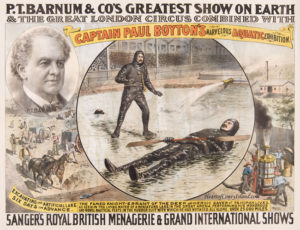
Paul Boyton in his rubber suit. Archival image from Heartofconeyisland.com
Boyton was nothing if not a man of his time—bombastic, optimistic, and a hustler. This was the era of P.T. Barnum (whose circus Boyton toured with as its main act for the 1887 season) and Harry Houdini (who performed at Coney Island during this period). It was also an era of frantic profit-chasing and bone-deep corruption. Boyton wasn’t really corrupt (he didn’t have the connections), and he ended up bankrupt (like many others), but his personal flair for grabbing headlines put him right up there with the Barnums and Houdinis of the world.
Just to give you a sense of who Boyton was, here are three things that he did before founding Sea Lion Park, the first gated amusement park at Coney Island, in 1895:
- He spent years traveling around the world promoting a full-body, inflatable, rubber suit that he wanted steamship companies to stock on their ships for passengers to wear in case the ship sank.
- As part of this marketing, he floated down rivers and rapids for hundreds of miles in the U.S. and Europe. He carried a giant rubber pouch (or sometimes a little boat) to hold his belongings, including a bugle that he would use to announce his presence when he washed up on shore and wandered into the nearest town.
- He became famous enough for all this aquatic daredevilry that in 1880 the government of Peru said they would pay him a bounty for blowing up Chilean ships that were then blockading the country. Thus ensued a Wile E. Coyote-esque scheme to attach explosives to ships floating off the coast, which resulted in no casualties except for the seals that were shot by the Chilean navy, who mistook them for a lunatic in a rubber suit trying to hand-torpedo their ships.
So, well before Boyton arrived at Coney Island he had proven himself a harbinger of the manic, spectacle-driven, mass entertainment culture that really took off in the early 1900s and that, frankly, we’re still living in today.
It’s not like Boyton just showed up on an empty beach and got down to business, though. By the time he showed up in 1895, Coney Island was already a well-developed and hugely popular summer hangout for city-dwellers. It was an escape from the city’s heat (since there was no such thing as air conditioning), the tedium of everyday life (radios didn’t even exist yet), and the stifling Victorian social norms of the day.
There were actually three distinct areas on the island, two of which—Manhattan Beach and Brighton Beach—were basically upscale, all-inclusive resorts—respectable places for well-off families to dine, enjoy the beach, and take in live concerts or fireworks shows. The third area, West Brighton, was the neighborhood we think of when we refer to “Coney Island” today.
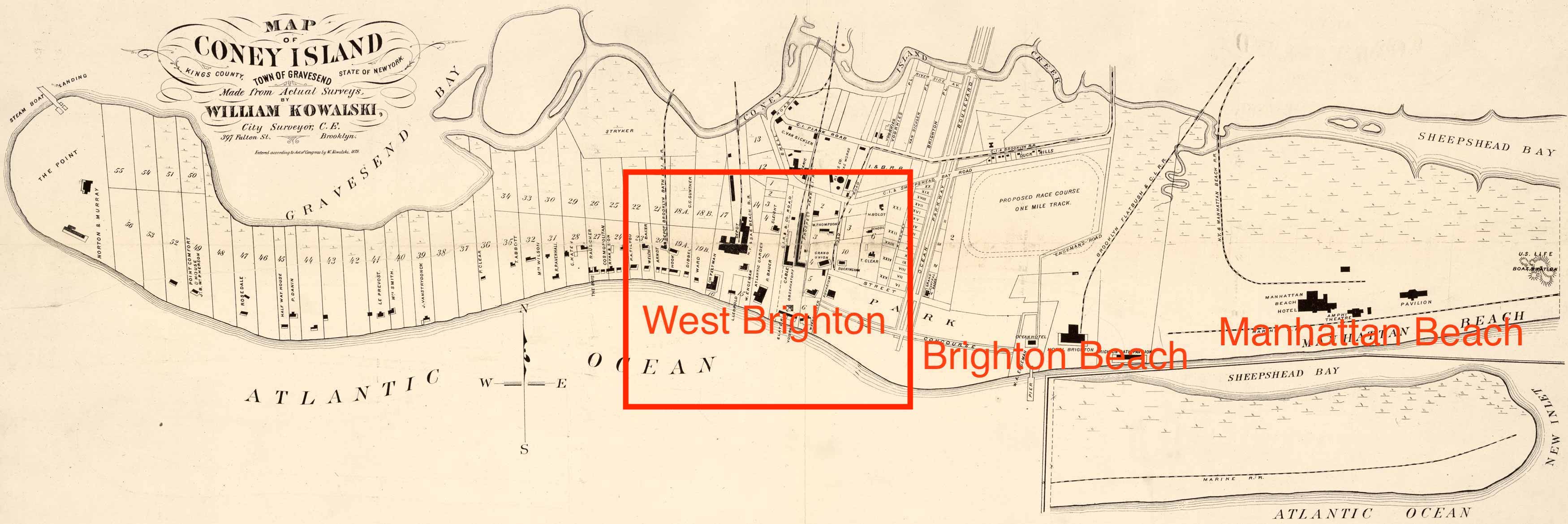
West Brighton was like Coney Island’s wild west. It was a chaotic melting pot of leisure and entertainment entrepreneurs each pursuing their own money-making schemes. Many of these schemes were conventional—saloons, restaurants, gambling parlours, dance halls, and smaller beach resorts (all of Coney Island’s beaches were in private hands at the time; there was no boardwalk and until 1923 you had to pay one bathhouse operator or another if you wanted access to the beach).
Other money-making schemes, however, were less conventional. There was, for example, the Iron Tower, (a 300-foot observation tower with a steam-powered elevator (1878-1911). Or there was the famous Elephant Hotel (1885-1896). And, of course, there was also LaMarcus Adna Thompson’s Switchback Railway (1884-1885), the first proto-roller coaster in the United States.
At Coney Island, amusement entrepreneurs were like that era’s app developers. The four gated amusement parks that would eventually operate in Coney Island (Boyton’s Sea Lion Park, plus Steeplechase Park, Luna Park, and Dreamland) were anomalies in that sense. Most amusements were operated as one-off attractions, the same way a person might open a bar or restaurant today. People just walked up and paid to watch your reenactment of the Jonestown Flood or to ride your roller coaster. Just like a restaurateur, if you were successful, you might own multiple attractions sprinkled around the area.
I want to get back to Paul Boyton, but first there’s one other crucial ingredient that played a huge role in Boyton’s founding of Sea Lion Park as well as Coney Island’s Golden Age more broadly. Boyton didn’t invent the idea of creating an enclosed park, nor did he invent the various attractions therein. He pretty clearly based his park on one of the biggest cultural phenomena then sweeping the Western world: world’s fairs and expositions.
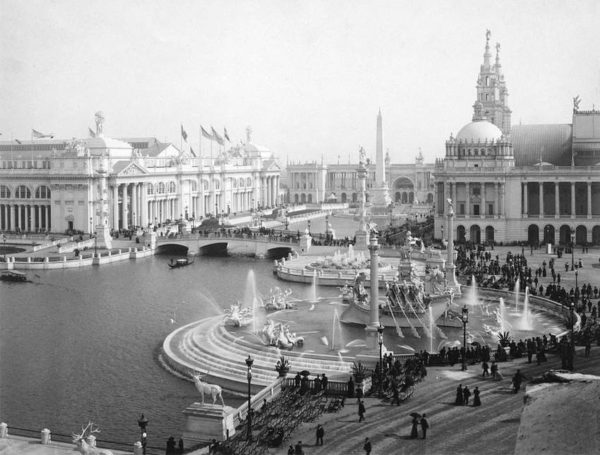
The famous midway from the 1893 World’s Columbia Exposition in Chicago where the Ferris Wheel also made its debut. Archival image from allthatsinteresting.com
Although they would eventually lose their cultural relevance and become more ridiculed than celebrated, it’s hard to overstate how much world’s fairs influenced the development of Coney Island and the modern amusement industry. In their prime, they were glitzy and breathtaking showcases that brought together all of the technology and excitement of the industrial revolution, as well as a new sense of a globalized world, and packaged them for the enjoyment of the masses. The Eiffel Tower and the original Ferris Wheel were created for world’s fairs. Popcorn, cotton candy, and ice cream cones were popularized on their midways.
In most meaningful respects, the parks that came to define Coney Island’s Golden Age were simply permanent recreations of what their founders had experienced at world’s fairs, from the rides to the architecture to some of the attractions that seem unfathomable to us today, like incubators full of premature babies and a native tribe from the Philippines that slaughtered and cooked dogs from the local pound for parkgoers’ grisly entertainment.
This was the model that Boyton followed for Sea Lion Park. Unsurprisingly, he chose an aquatic theme and decided to build the park around a ride that he encountered in Europe: a “shoot-the-chutes,” the ancestor of today’s log flumes. The rest of the park was mostly unremarkable, though Boyton performed all sorts of ludicrous stunts to grab people’s attention, including sending lions and bears down the shoot-the-chutes. (There was a strong circus element to the park.)
But that’s basically all Sea Lion Park was—a few rides and some circus performances. If it were the only park to be built at Coney Island, we probably wouldn’t remember it, or perhaps even Coney Island, today. What was important about Boyton’s success in those first few seasons was that he inspired the parks that would come to define Coney Island’s Golden Age: Steeplechase Park, Luna Park, and Dreamland.
The Golden Age
The first and longest-lived of these parks was Steeplechase. Unlike Luna Park and Dreamland, which would become the iconic and lavish standard-bearers of the Golden Age, Steeplechase had mostly cheap but family-friendly entertainments—slides, spinning tunnels, and carnival rides, as well as the namesake steeplechase-style roller coaster (parallel tracks that allowed guests to race each other on wooden horses). The park’s founder, George Tilyou, was already a successful operator of local attractions, but Sea Lion Park’s initial success proved the viability of the enclosed-park business model, so he got in the game.
What Steeplechase Park lacked in grandeur it made up for with affordability and simple pleasures. And part of its substantial legacy has to do with the fact that it operated from 1897 until 1964, decades longer than its competitors. Although Tilyou was a careful spender, he routinely scouted world’s fairs for new additions to his park, which is how he ended up bringing the blockbuster ride from 1901’s Pan-American Exposition in Buffalo, A Trip to the Moon, to his park for the 1902 season.
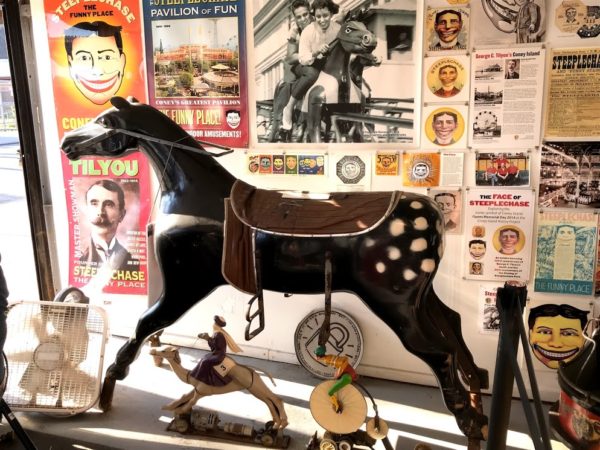
An original Steeplechase horse on display at the Coney Island History Project near the Wonder Wheel.
A Trip to the Moon was a hugely influential ride and the Golden Age might not have happened without it. This is because the ride’s creators, Frederic Thompson (no relation to L.A. Thompson) and Skip Dundy would go on to create the park that secured Coney Island’s legacy: Luna Park.
1902 was a terrible season for Coney Island. It rained almost every weekend that summer, which was enough to financially wreck Paul Boyton and Sea Lion Park. Steeplechase, by contrast, was carried through the season by the indoor, and therefore rain-proof, A Trip to the Moon. Seizing the moment, at the end of the 1902 season, Thompson and Dundy bought Sea Lion Park and all its assets from Boyton and prepared to leave Steeplechase behind and strike out on their own. They proceeded to demolish Sea Lion Park, except for the shoot-the-chutes, and build their own park from scratch.
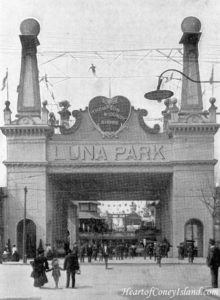
Luna Park entrance. Archival image from Heartofconeyisland.com
Luna Park was the venture that elevated Coney Island from a somewhat-sleazy entertainment district to a global icon. It was like a cross between Disneyland and the Las Vegas Strip, decades before either of those places existed. Everything was big, elaborately themed, and designed to enchant. The entrance was a gargantuan arch with towering finials, and the park was designed around an elaborate midway with a city’s worth of fanciful buildings and a giant tower overlooking a vast reflecting pool. There were rides and shows and an EPCOT-like display of foreign countries and exotic cultures. While most Americans still used oil lamps and candles for lighting at home, Luna Park had so many electric light bulbs (250,000, allegedly) that it glowed at night in a way that quite literally no human being had ever witnessed before.
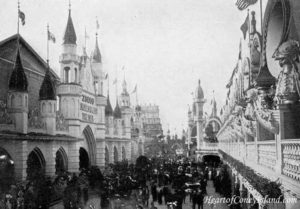
Luna Park midway. Archival image from Heartofconeyisland.com
The impact was immediate. 50,000 people visited the park on Memorial Day that year. Copycats sprang up all over, not just in the U.S. but all over the world. Frederick Ingersoll, one of Coney Island’s many opportunistic entrepreneurs (his company was one of the first prolific roller coaster manufacturers) even created a whole chain of Luna Parks. None of these imitators had any official connection to the original, but they were all capitalizing on the original park’s name and worldwide renown.
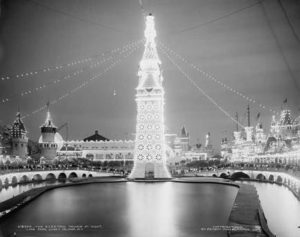
Luna Park tower. Archival image from Heartofconeyisland.com
Luna Park’s success inspired the creation of the final park of Coney Island’s glory years: Dreamland. It was the brainchild of William Reynolds, a politically connected developer who witnessed Luna Park’s phenomenal success and decided he wanted a piece of the action. His strategy was more or less to copy Luna Park—with elaborate rides, shows, exhibitions, and even a central tower over a reflecting pool—except he would make everything bigger and fancier. The footprint of the park was, in fact, smaller, but it had a better location on the water (allowing guests beach access) and it even had its own pier so guests could come directly to Dreamland via steamship rather than dealing with the hot, crowded trains (Steeplechase Park also had its own pier for direct steamship access; Luna Park, however, was landlocked on the “wrong side” of Surf Avenue—see this historical map or a present-day overlay). Dreamland’s central tower would be bigger and taller than Luna Park’s; its shoot-the-chutes would be a twin-chute ride whose towers extended out into the ocean; its ballroom and restaurant would be grander and more sumptuous; and it would have 1,000,000 light bulbs instead of 250,000.
And so it was that visitors to Coney Island in the first decade of the 20th century found themselves stepping into a world like no one had ever seen. The old parts of Coney Island still existed—the saloons, the dance halls, the independent shows and attractions—but Luna Park and Dreamland offered a degree of immersive spectacle that was revolutionary. The closest analogy today to what Coney Island was like then might be Orlando, where the enclosed Disney, Universal Studios, and Sea World parks coexist with a whole entertainment ecosystem of independently operated attractions—go karts, escape rooms, magic shows, indoor skydiving, and all the rest.
This was the Golden Age. And similar to the way Disney and Universal have been sinking money into massive projects like Star Wars: Galaxy’s Edge and the Wizarding World of Harry Potter, Luna Park and Dreamland spent lavishly to compete with one another. Unlike these modern parks, however, Luna Park and Dreamland weren’t subsidiaries of multinational corporations, so their finances relied on wealthy investors and lenders. The two parks invested in general improvements and expensive new rides like Dragon’s Gorge at Luna Park, an elaborately themed indoor scenic railway, and Creation at Dreamland, a show dramatizing the Book of Genesis.
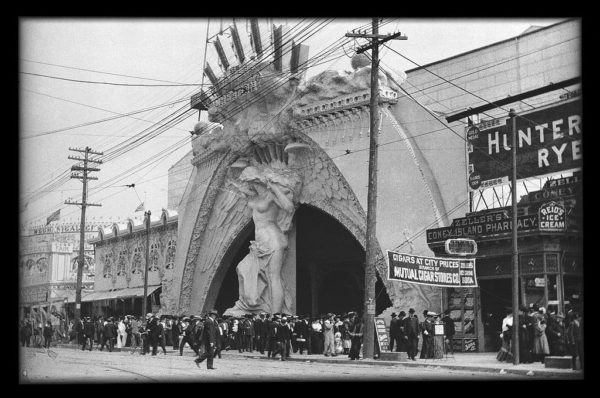
The entrance to Dreamland’s Creation spectacle. Archival image from the Brooklyn Museum (via Wikipedia).
(Biblical-themed attractions weren’t new to Coney Island. As mentioned before, this was the end of the Victorian Era. There was widespread, vocal concern about the degradation of Christian morals and values. Some entrepreneurs tried to co-opt, or at least neutralize, these criticisms by giving rides vaguely Christian themes, like the Ben Hur Racers roller coaster, or more overt ones, like a show called The Deluge, which depicted Noah’s flood. The Deluge is a good example of how the pious and the profane coexisted at Coney Island—it was a retrofit of an existing show that depicted the Johnstown Flood. Disaster shows had long been common and popular at Coney Island, the equivalent of today’s disaster movies. Other disaster shows during that period depicted tenement building fires, the Galveston Hurricane of 1900, and the eruptions of Mt. Pelee and Mt. Vesuvius.)
Luna Park’s and Dreamland’s renown minted Coney Island’s reputation. Although nothing they did was entirely unprecedented—the rides, the shows, the exhibitions, etc. were mostly adapted from world’s fairs or existing entertainments at Coney Island—the way they combined, refined, and expanded these elements was enough to leave an impression that has echoed across generations, down to the present.
The End of the Golden Age
This period of intense, debt-fueled competition couldn’t and wouldn’t last for long. Dreamland burned down the night before it was set to open for the season in 1911, just seven years after it opened. There’s a good chance the fire was intentional, a way for its founder, William Reynolds, to exit the endeavor with a profit in spite of the park’s operating losses. It was never rebuilt.
Luna Park, meanwhile, succumbed to the massive debt it had accumulated in its rivalry with Dreamland and was taken over by creditors in 1912, nine years after it opened. Although it would continue operating until it, too, burned down in 1944, Luna Park would never recapture the innovative spirit or glamour of its first decade.
This is how the Golden Age ended—with both a bang and a whimper. Dreamland’s demise was dramatic, but Luna Park simply began a long, steady period of stagnation while Steeplechase Park just plugged along.
In fact, visitors to Coney Island would increase vastly over the coming years, continuing to visit Luna Park, Steeplechase Park, and the great mass of independent attractions that continued to operate outside of the parks. Coney Island’s most famous ride, the Cyclone, wouldn’t debut until 1927, sixteen years after the Dreamland fire. Visitors to Coney Island reached their peak well after the Golden Age. Holiday crowds grew from around 100,000 on a busy day in 1900 to around 1 million in the 1920s thanks to the newly cheap subway fare after the rail lines to Coney Island were integrated into the New York City subway system in 1920. After dipping during the Depression, Coney Island’s popularity increased even more, with summer holidays attracting over 2 million in the 1940s.
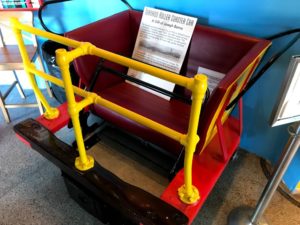
An original car from the Tornado, an iconic Prior and Church design.
But even as visitors increased, the quality of Coney Island just wasn’t the same. After the Golden Age, the attractions, as a whole, started to become cheaper and less remarkable. A few roller coasters, including the Thunderbolt (1925-1982), Tornado (a.k.a. the Bobs, 1926-1977), and Cyclone (1927-present), would stand out, but otherwise the era of expensive, marquee attractions was over.
The Great Depression, of course, hit Coney Island hard, but it was really the descent of New York City, more broadly, into a period of high crime and low investment lasting from the 1950s through the 1980s that snuffed out the last traces of Coney Island’s one-time splendor. Luna Park closed after a fire in 1944. Steeplechase Park went under in 1964. Developers transformed large swaths of Coney Island into housing complexes, which is what sits on the site of Luna Park today. Where Dreamland once stood, today you’ll find the parking lot of the New York Aquarium. And on the site of Steeplechase Park, Brooklyn’s minor league baseball stadium. The footprints of these parks are still somewhat legible on Google Earth.
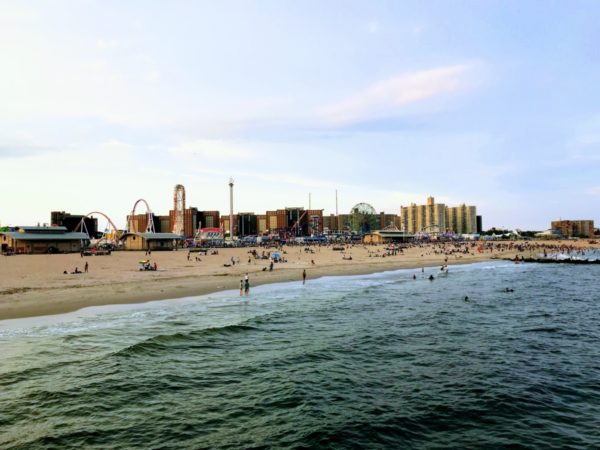
Coney Island’s modern skyline, dominated by massive apartment complexes.
None of this is to say that Coney Island didn’t continue to be an important and memorable place for people who grew up in New York City in the 1950s and later. Unlike most seaside and trolley parks that proliferated around the time of Coney Island’s Golden Age, Coney Island at least managed to escape complete redevelopment. Scraps of it survived, including three rides (the B&B Carousel, the Wonder Wheel, and the Cyclone) that continue to operate to this day.
Still, a visit to Coney Island today can be troubling. It’s hard not to look around and think that, given what it was then and what it is now, something bad must have happened. In the next part of this series, we’ll take a visit to Coney Island as it exists today.
…
A note on sources: My main sources for learning about Coney Island’s past were two info-packed websites, Heart of Coney Island and the Coney Island History Site. They’re definitely worth perusing if you want to know more. The Bowery Boys podcast also has a few episodes about Coney Island. I also consulted Robert Cartmell’s classic roller coaster history, The Incredible Scream Machine.

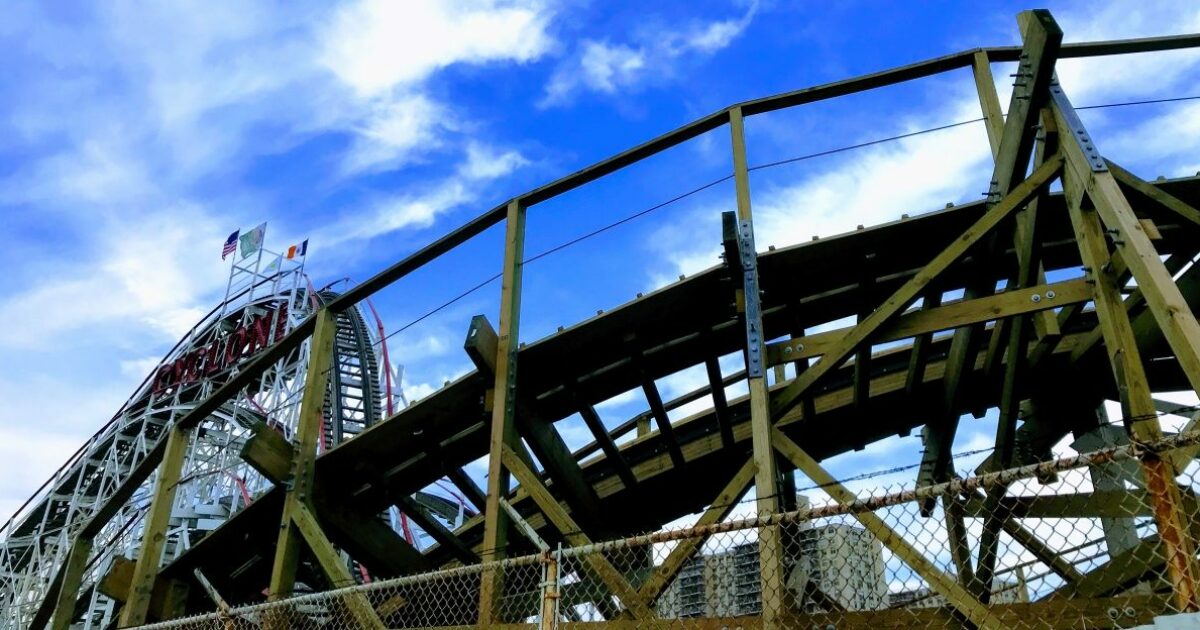
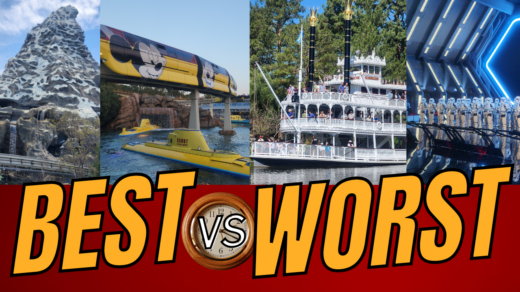

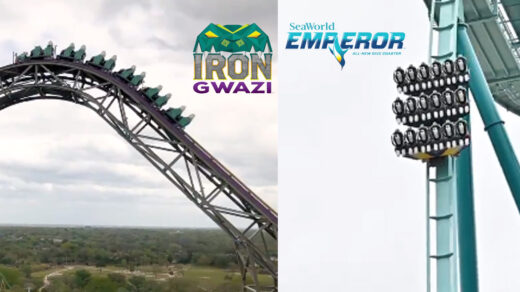





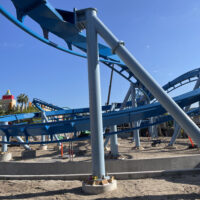





I totally enjoyed reading this. I grew up in Coney Island from the “50”s to the late “60”s I sure do miss it and try to read everything I can find about it. Thank you. I hope I can find and read part 2.
it’s in here. at the end of article there is something to tap for part 2
Good but incomplete. Forgot to mention the “Bobsled” A ride that mimicked a real bobsled.( It was on wheels) located next to the Tornado. Also “Feltman”s”, with it’s singing waiters { I think it was Eddie Canter and Cary Grant, among others). Also the Mardi gras parades in the late 1940’s and early 1950’s.I know you can’t fit it all, but I thought these were important omissions to a true history of Coney Island. Oh and Luna Park limped into 1946 when a second fire put a final end to it
The Water Flume
Himalaya
Bobsled
The rides on the boardwalk?
Bumper Cars
That ride where you went underwater in a tank?
And ?omg the lady transforms into a Ape!
I miss those days. Oh the Laughing lady!
Vera You are thinking of the Diving Bells that went under water. It was more fun watching people get splashed when the bells came up than the actual ride under water. The laughing lady was the Fun house. That laugh drove me crazy! What about the Sky Ride that took you above ground to surf ave & The Astro Tower! The wax museum was so creepy as a kid but I had to go once a week before fire works. The Himalaya was fun & played the best music! (Rip Andy) I have a pic with a few of my brothers by that giant fiberglass guy that stood on boardwalk by Astroland. I miss my Coney of 60-70’s